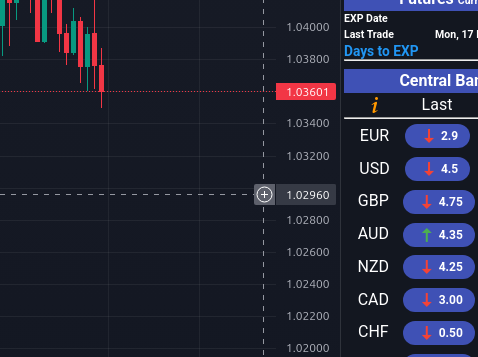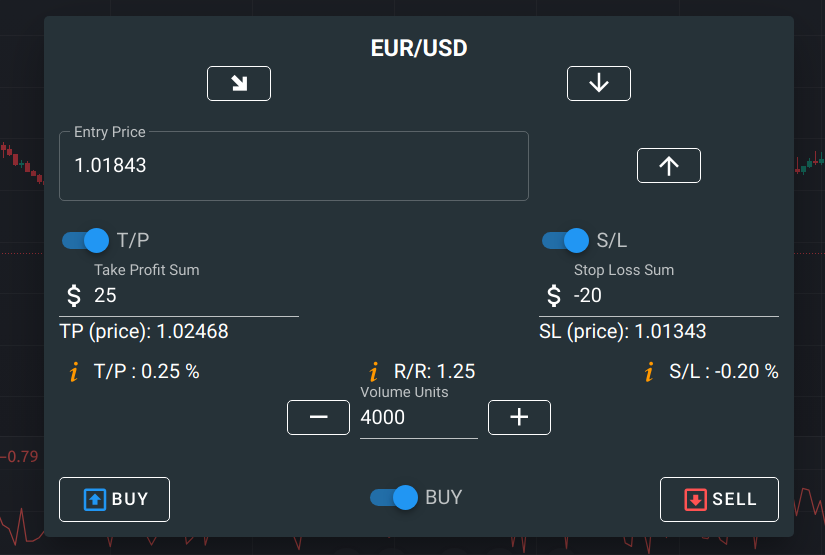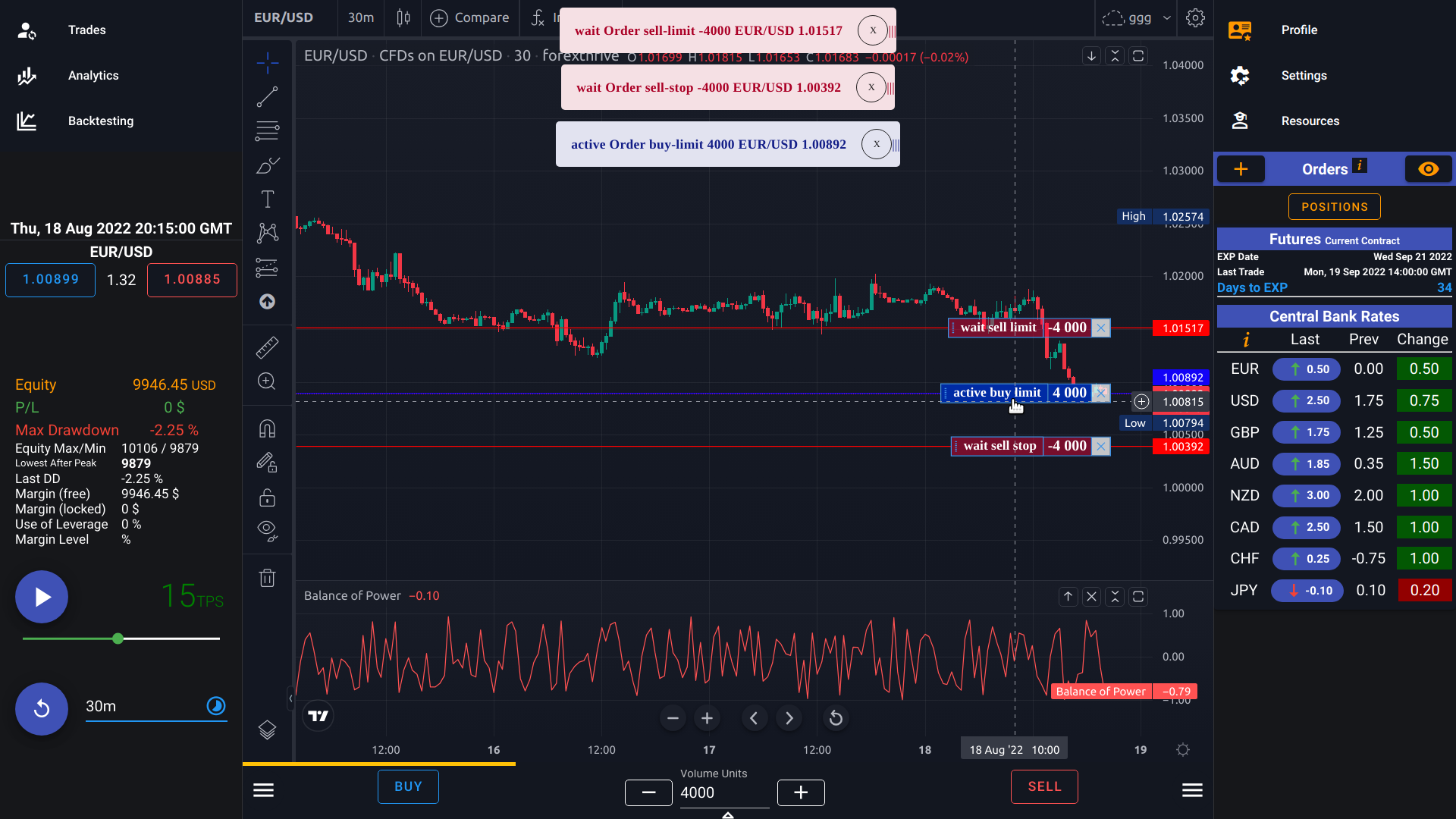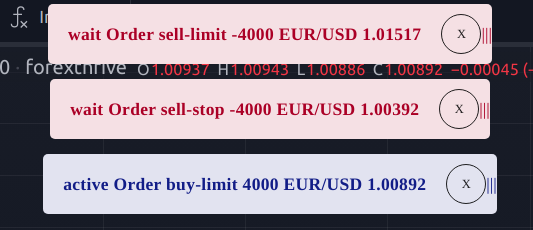- Guides
- How to use (OTA) - Orders
One Triggers Another (OTA) - Orders
OTA is a type of conditional order commonly used in trading. OTA orders consist of two parts: the primary order and the secondary order. The primary order is the initial action you want to take, like buying or selling a security. The secondary order is a contingent action that is executed only if the primary order is filled.
Here's how OTA works:
Primary Order: This is your initial trading action. For example, you might place a limit order to buy EUR/USD at a specific price.
Secondary Order: This order is contingent on the primary order being filled. It could be another limit order, stop order, or market order. For instance, you may set a stop-loss order at a certain price below your purchase price once your buy order is executed.
Let's see how to set up an OTA order in the trading simulator.
To open a new OTA order window, find the plus sign on the right pane of your chart where the prices are displayed, and click on it. The new order window will open, pre-filled with the price you selected.


OTA orders are often used for risk management and to automate trading strategies. They allow traders to plan for multiple scenarios and ensure that if one part of their strategy is executed, other parts are automatically triggered, reducing the need for constant monitoring and manual intervention. This can be particularly useful in volatile markets or when traders have specific entry and exit criteria they want to follow.
Once the order is submitted, you will see the following screen

Here's how you might set up an OTA order for EUR/USD:
Trading the EUR/USD currency pair. You believe that a significant price movement is imminent, and you want to plan your trade accordingly using an OTA order.
Scenario: You anticipate a bullish (upward) breakout in the EUR/USD exchange rate.
Looking at the 3 tickets at top-center of the screen:
- wait Order sell-limit -4000 EUR/USD 1.01517
- wait Order sell-stop -4000 EUR/USD 1.00392
- active Order buy-limit 4000 EUR/USD 1.00892 (Trigger)

Primary Order (Trigger): You place a buy limit order for EUR/USD at a specific price level, let's say 1.00892. This is your primary order, and it's the action you want to take if the EUR/USD rate reaches that level. You want to buy EUR/USD if it reaches or surpasses 1.00892 (Order buy-limit 4000 EUR/USD 1.00892)
Secondary Order (Triggered): Simultaneously, you set a secondary order, which is contingent upon the primary order being executed. In this case, you place a take-profit limit order at a higher price level (Order sell-limit -4000 EUR/USD 1.01517). If the primary buy order at 1.00892 is triggered and the EUR/USD rate climbs to or above 1.01517, this secondary order will execute, locking in your profits.
Contingent Stop-Loss Order: You also set a stop-loss order as part of your OTA strategy. If your initial buy order at 1.00892 is executed but the market moves against you, you want to limit potential losses. So, you place a stop-loss order at a lower price level (Order sell-stop -4000 EUR/USD 1.00392) If the market goes below 1.00392, this order will execute, helping to minimize your losses.
In this scenario, you have effectively set up an OTA order that includes a primary order (buy limit), a secondary order (Order sell-limit -4000 EUR/USD 1.01517), and a stop-loss order (Order sell-stop -4000 EUR/USD 1.00392). The key point is that the secondary and stop-loss orders are contingent upon the primary order being filled. If the market doesn't reach your entry point of 1.00892. none of the secondary orders will be executed, and the trade won't be initiated.
OTA orders provide traders with a structured way to manage their trades, incorporating entry, profit-taking, and risk management components into a single order setup.